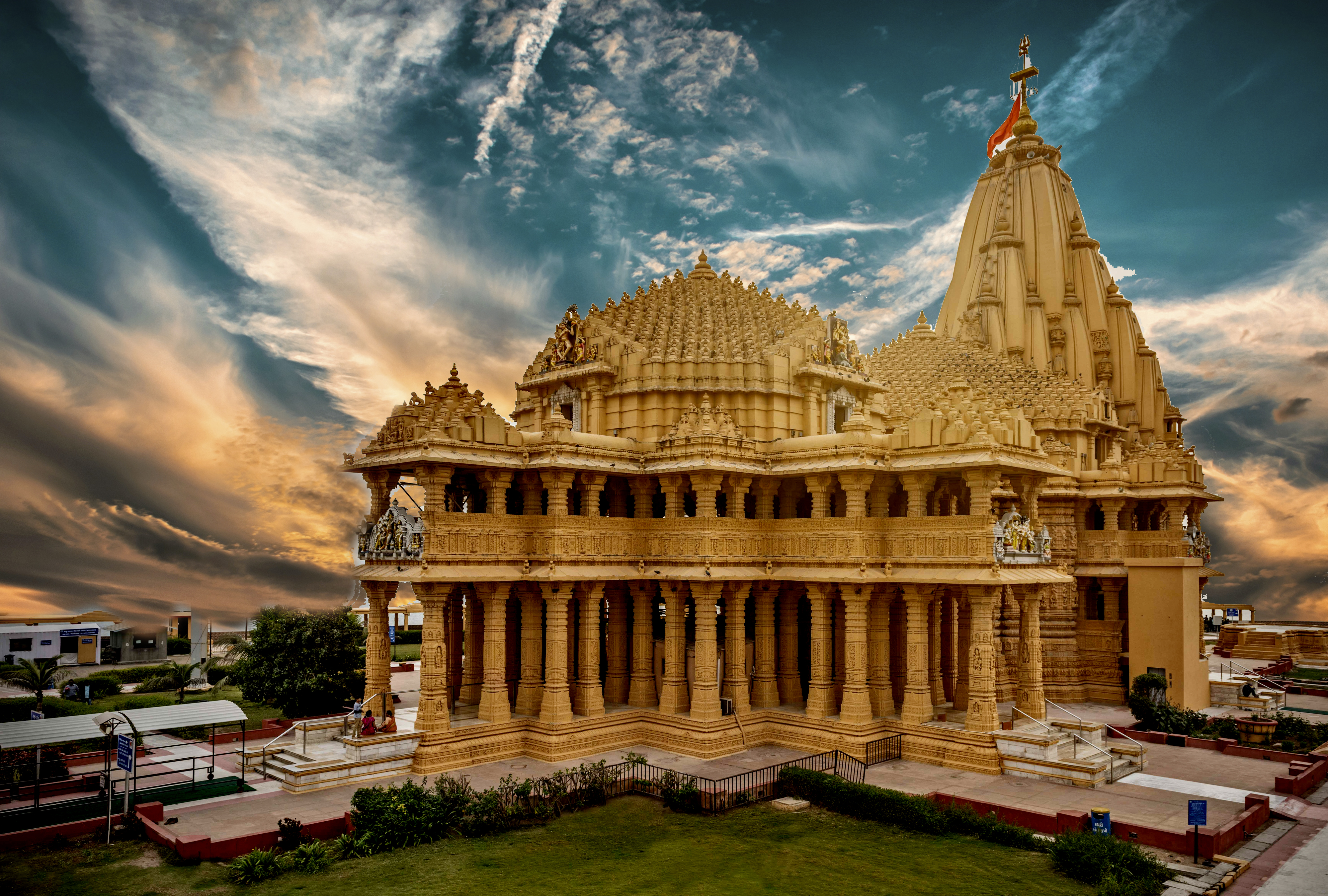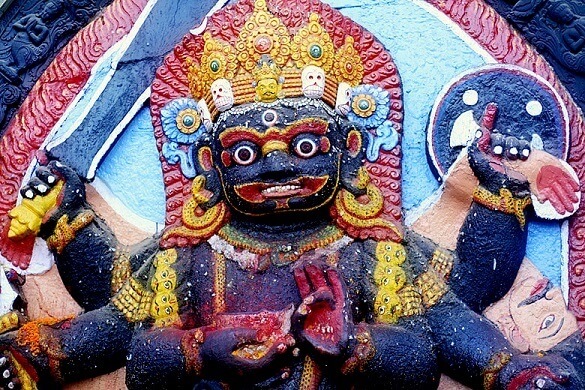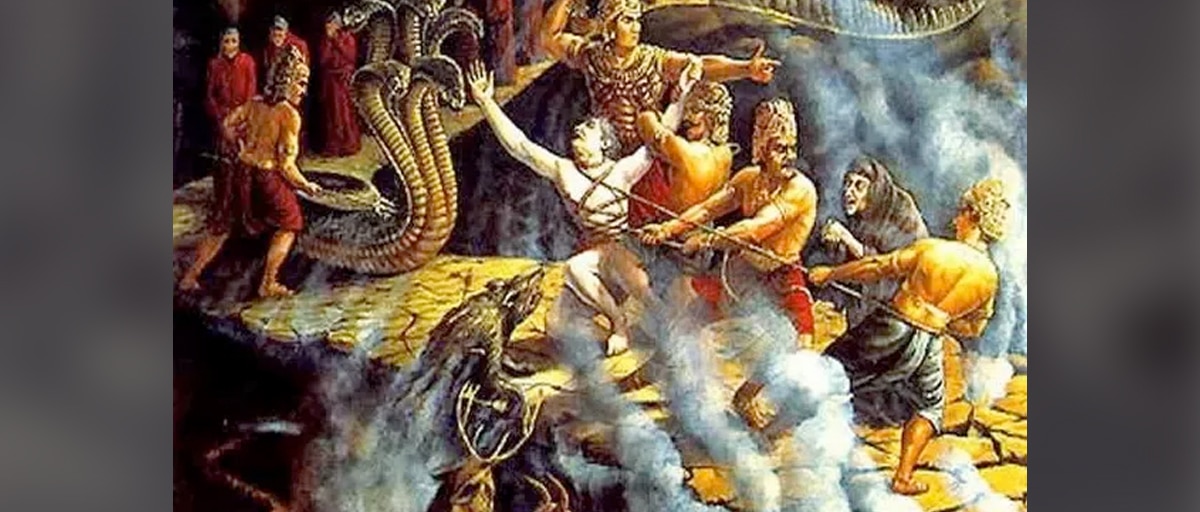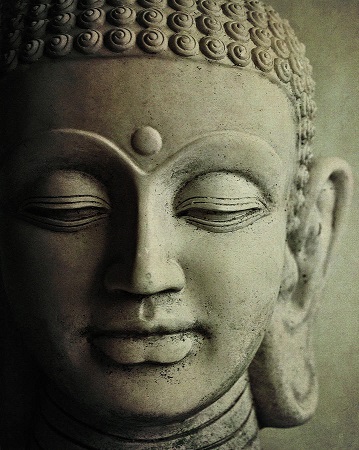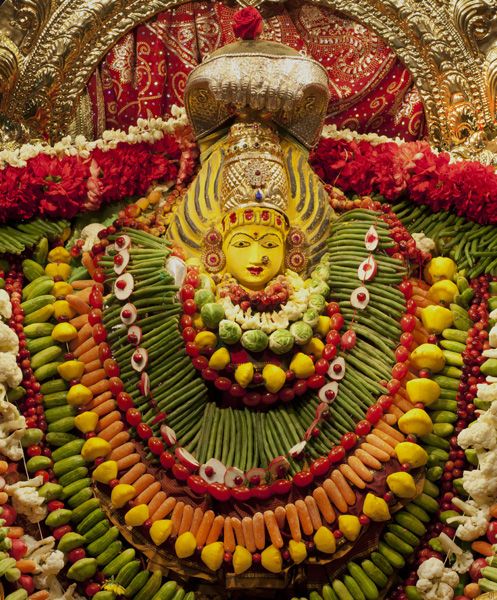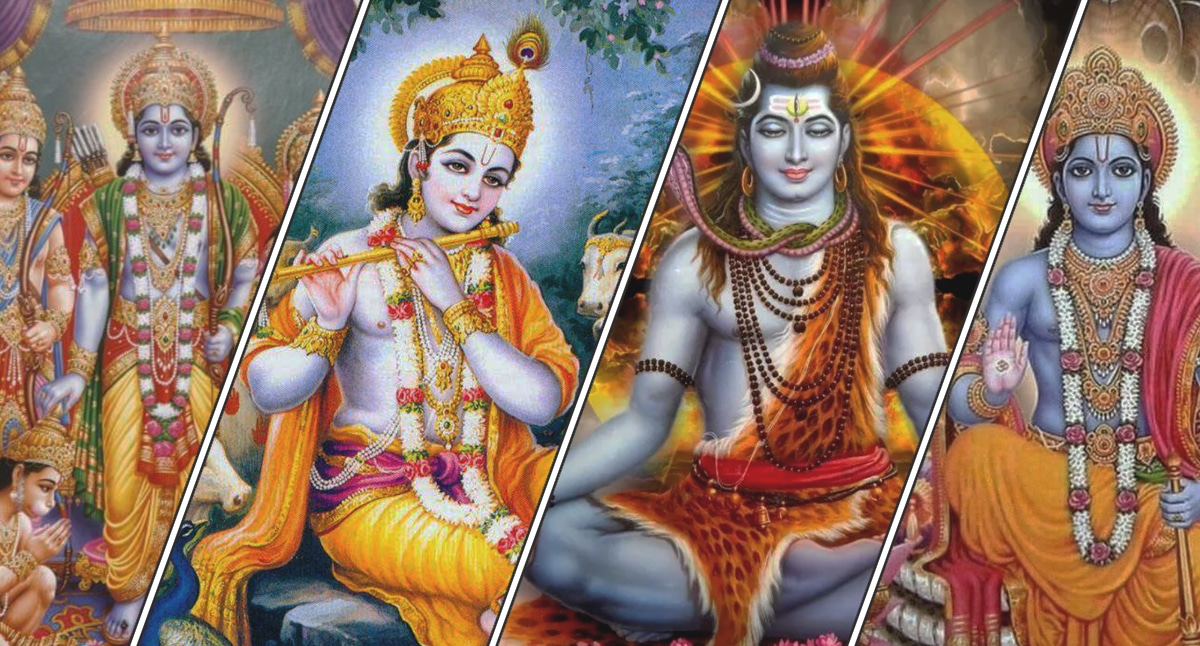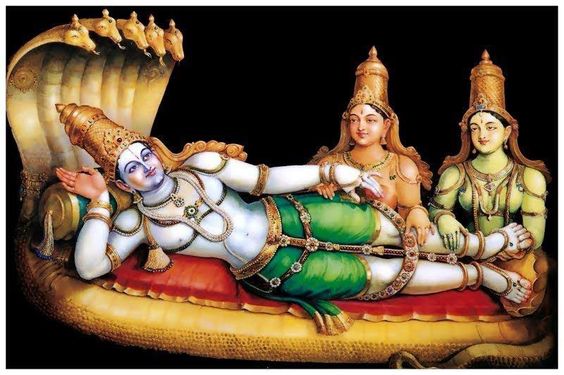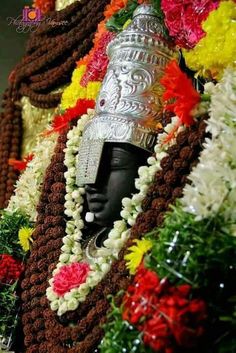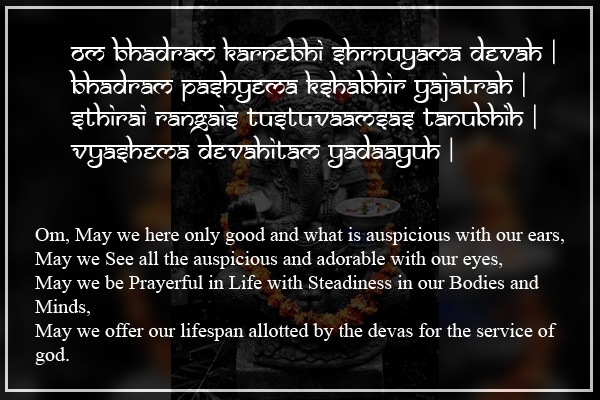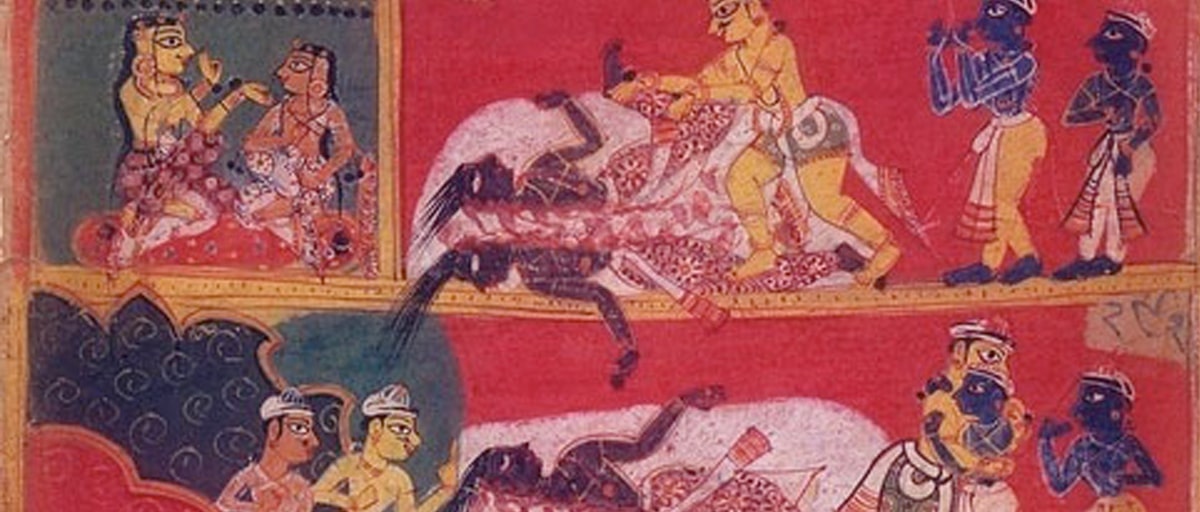In the vast sea of knowledge of Hindu mythology, the word “Jyotirlinga” Or “Jyotirling” (ज्योतिर्लिंग) holds a very strong religious and emotional significance as it represents the abode of Lord Shiva. The word Jyotirlinga is derived from the Sanskrit words “Jyoti” meaning “radiance” or “light” and “Linga” referring to the symbol of Lord Shiva, Jyotirlinga embodies the divine cosmic energy of the Supreme Being. These sacred abodes of Lord Shiva are believed to be alive with His presence and are revered as the most visited pilgrimage sites in India.
The origin of the term “Jyotirling” (ज्योतिर्लिंग) can be traced back to ancient scriptures and religious texts. The Puranas, particularly the Shiva Purana and the Linga Purana, extensively mention the significance and stories of the Jyotirlingas. These sacred texts describe the legends associated with each Jyotirlinga and the divine manifestations of Lord Shiva at these holy sites.
The worship of the Shivalinga holds utmost importance for devotees of Lord Shiva, considering it as the primary form of worship. It is believed that the Shivalinga represents the resplendent light or flame-like form of the Shiva himself, one of the principal deities in the Hindu trinity. It is a powerful and ancient symbol associated with the divine masculine energy, creation, and the eternal cycle of life.

Here are some key aspects and interpretations associated with the Shiva Lingam:
- Creation and Dissolution:
The Shiva Ling represents the union of the cosmic energies of creation and dissolution. It symbolizes the cyclic process of birth, growth, death, and rebirth. The rounded top of the Linga represents the energy of creation, while the cylindrical base represents dissolution or transformation. - Divine Masculine Energy:
The Shiva Ling is a representation of the divine masculine principle. It embodies qualities such as strength, power, and spiritual transformation. It is often worshipped by devotees seeking blessings for inner strength, courage, and spiritual growth. - Union of Shiva and Shakti:
The Shiva Ling is often seen as a representation of the union between Lord Shiva and his consort, Goddess Shakti. It symbolizes the harmonious balance of the divine masculine and feminine energies, known as Shiva and Shakti, respectively. The Linga represents the Shiva aspect, while the yoni represents the Shakti aspect. - Fertility and Life Force:
The Shiva Ling is associated with fertility and the life force energy. It represents the procreative energy of Lord Shiva and is worshipped for blessings related to fertility, progeny, and the continuation of family lineage. - Spiritual Awakening:
The Shiva Ling is revered as a sacred object of meditation and spiritual awakening. Devotees believe that meditating upon the Linga can help awaken the peaceful spiritual energy within and lead to self-realization and liberation. - Ritual Worship:
The Shiva Ling is worshipped with great reverence and devotion. Devotees offer water, milk, bilva leaves, flowers, and sacred ash (vibhuti) to the Linga as a gesture of respect and adoration. These offerings are believed to purify the mind, body, and soul and invoke the blessings of Lord Shiva.
It is important to note that the Shiva Ling is not considered a phallic symbol in a purely sexual context. Its representation goes beyond the physical aspect and delves into the profound symbolism of cosmic creation and spiritual transformation.
The manifestation of Lord Shiva as a Jyotirlinga holds a special place in Hindu mythology. It is believed that during the night of the Aridra Nakshatra, Lord Shiva revealed himself as the Jyotirlinga. Though the appearance may not have distinguishing features, it is said that individuals who have reached higher levels of spiritual attainment can perceive these lingas as columns of fire penetrating through the earth. This celestial phenomenon further enhances the true significance attached to the Jyotirlingas.
Initially, there were believed to be 64 Jyotirlingas, but 12 of them hold immense auspiciousness and sanctity. Each of these 12 Jyotirlinga sites is dedicated to a specific presiding deity, considered as distinct manifestations of Lord Shiva himself. The primary image at each of these sacred sites is a linga or lingam, symbolizing the timeless and eternal Stambha pillar, which represents the infinite nature of Lord Shiva.
The Jyotirlingas evoke deep religious sentiments among devotees, who perceive them as powerful sources of divine energy and blessings. Pilgrims from far and wide regions of India and from the world undertake long journeys to visit these sacred sites, seeking spiritual upliftment, inner transformation, and closeness to Lord Shiva. The presence of the Jyotirlingas serves as a constant reminder of the transcendental nature of God and the infinite possibilities of spiritual realization.
Dwadasa Jyotirlinga Stotra by Adi Shankaracharya:

Dwadasa 12 Jyotirlinga Stotra In Sanskrit
“सौराष्ट्रे सोमनाथं च श्रीशैले मल्लिकार्जुनम् । उज्जयिन्यां महाकालमोकांरममलेश्वरम् । परल्यां वैद्यनाथं च डाकिन्यां भीमशंकरम् । सेतुबंधे तु रामेशं नागेशं दारूकावने । वाराणस्यां तु विश्वेशं त्रयंम्बकं गौतमीतटे । हिमालये तु केदारं घुश्मेशं च शिवालये ।
ऐतानि ज्योतिर्लिंगानि सायं प्रातः पठेन्नरः । सप्तजन्मकृतं पापं स्मरणेन विनश्यति ।”
Dwadasa 12 Jyotirlinga Stotra English Translation
‘Saurashtre Somanaatham Cha Sree Saile Mallikarjunam. Ujjayinyaam Mahaakaalam Omkaare Mamaleswaram. Himalaye to Kedaram Daakinyaam Bhimashankaram. Vaaranaasyaam cha Viswesam Trayambakam Gowtameethate. Paralyaam Vaidyanaatham cha Naagesam Daarukaavane
Setubandhe Ramesham Grushnesam cha Shivaalaye ||’
Meaning of Dwadasa 12 Jyotirlinga Stotra in English:
“In Saurashtra is Somnath, and in Shri Shailam is Mallikarjuna, In Ujjain is Mahakala, and in Omkareshwar is Amaleshwara, In Parli is Vaidyanath, and in Dakini is Bhimashankara, In Setubandha is Rameshwara, and in Daruka Forest is Nageshwara, In Varanasi is Vishweshwara, and on the banks of Godavari is Trayambakeshwara, In the Himalayas is Kedara, and in Kashi is Gushmeshwara, By reciting these Jyotirlingas in the evening and morning, A person is relieved from sins committed in seven lifetimes.”
Note: This Sanskrit stotra or hymn highlights the 12 Jyotirlinga, including Somnath, Mallikarjuna, Mahakaleshwar, Omkareshwar, Vaidyanath, Bhimashankar, Rameshwaram, Nageshwara, Vishweshwara, Trayambakeshwara, Kedarnath, and Gushmeshwara. It emphasizes the power of reciting the names of these sacred lingas in relieving one from the sins accumulated over multiple lifetimes.
1. Somnath Jyotirlinga Temple – Veraval, Gujarat
The Eternal Shrine of Lord Shiva
The Somnath Jyotirlinga Temple, in the holy town of Prabhas Patan near Veraval, Gujarat, holds a prime spot among the 12 Jyotirlinga dedicated to Lord Shiva. Enshrining the first and foremost Jyotirlinga, this divine temple radiates with the powerful presence of Lord Shiva. The significance of the Somnath Temple can be traced back to ancient times, as mentioned in sacred scriptures and revered hymns.
Let us embark on a spiritual journey to explore the glory and devotion that surround the first Jyotirlinga – Somnath.
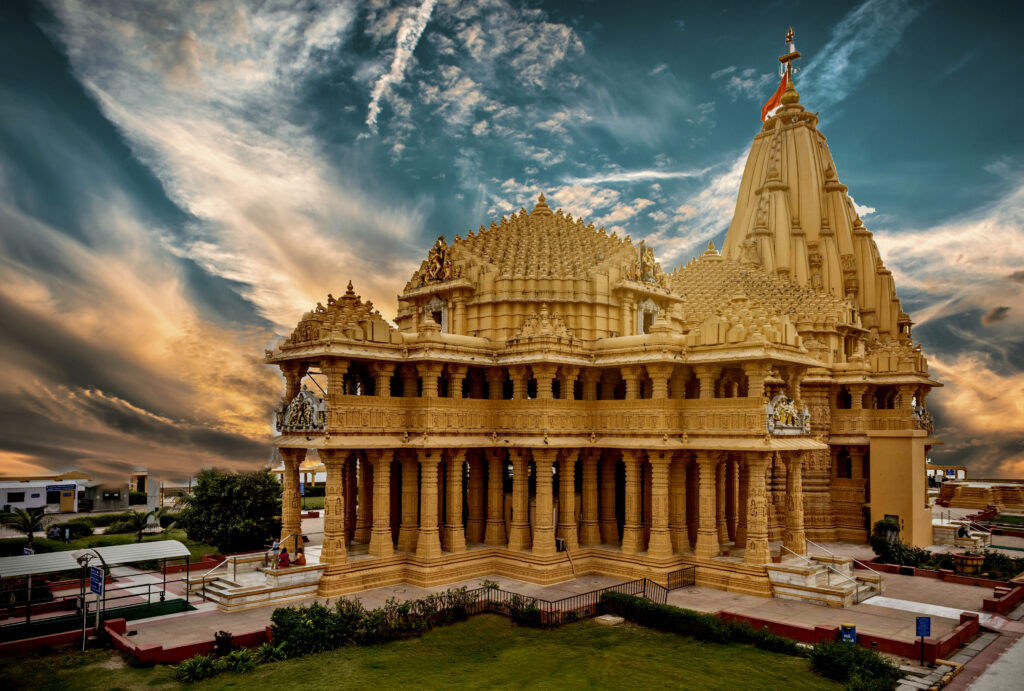
Image Credits : Wikipedia
Nomenclature and Significance of Somnath Temple:
The term “Somnath” is derived from two Sanskrit words – “Soma” and “Nath.” “Soma” refers to the Moon God, while “Nath” translates to “Lord” or “Master.” The name signifies the divine association of Lord Shiva with the Moon God, indicating the significance of this sacred abode.
Importatance of Somnath Temple
The Somnath Temple’s importance lies in its status as the first among the 12 Jyotirlinga. The term “Jyotirlinga” comprises two elements: “Jyoti” meaning “radiant light” and “Linga” representing Lord Shiva’s formless cosmic manifestation. The Jyotirlingas are considered the supreme abodes of Lord Shiva, where devotees can experience his divine presence and seek spiritual enlightenment.
History and Significance Of Somnath Temple:
The history of the Somnath Temple is intertwined with ancient mythology of Indian history. It is believed that Lord Shiva manifested himself as the first Jyotirlinga at Somnath, signifying the eternal divine light. The temple’s origin traces back to the Satyug era, and its prominence finds mention in revered scriptures like the Skanda Purana, Shiva Purana, and Dwadasha Jyotirlinga Stotram.
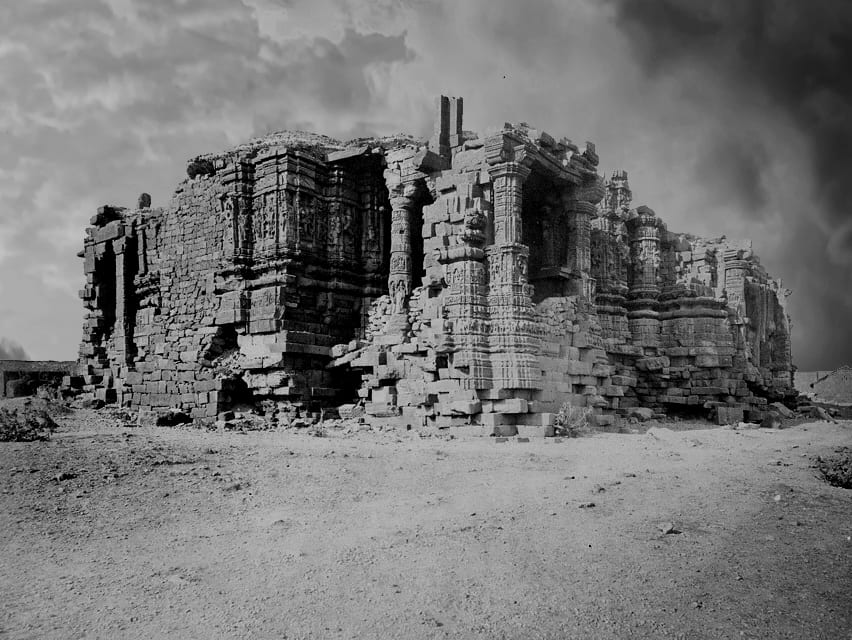
Image Credits: Wikimedia
Throughout its existence, the Somnath Temple witnessed the rise and fall of dynasties, facing numerous invasions and destruction. It stood as a testament to the unwavering faith and devotion of countless devotees, who rebuilt the temple time and again. The temple’s history includes the devastating invasions by Mahmud of Ghazni in the 11th century and subsequent reconstruction efforts by different rulers, explains the resilience and spirit of Shiva devotees.
Architectural Marvel Of Somnath Temple:
The Somnath Temple’s architectural marvel showcases a fusion of ancient and contemporary styles. The temple is truly magnificent, with its beautiful carvings, tall towers, and delicate sculptures. The Shiv ling is inside the gabhara. It represents a never-ending beam of light and reminds us of Lord Shiva’s everlasting presence in the universe.
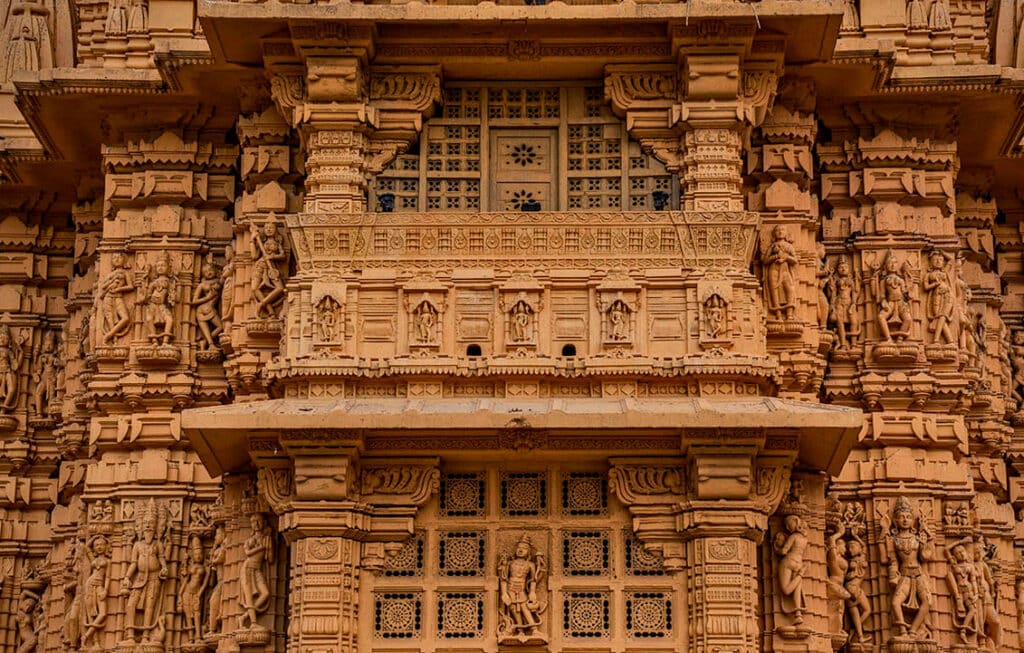
Architectural Marvel Of Somnath Jyotirlinga Temple. Photo Credits: Gujarat Tourism
Pilgrimage and Worship in Somnath Temple:
Pilgrims from far and wide undertake a spiritual journey to the Somnath Temple, seeking divine blessings, solace, and liberation from the cycle of life and death. The temple resonates with the enchanting chants of Vedic hymns and the deep devotion of devotees, creating an atmosphere charged with spiritual energy.
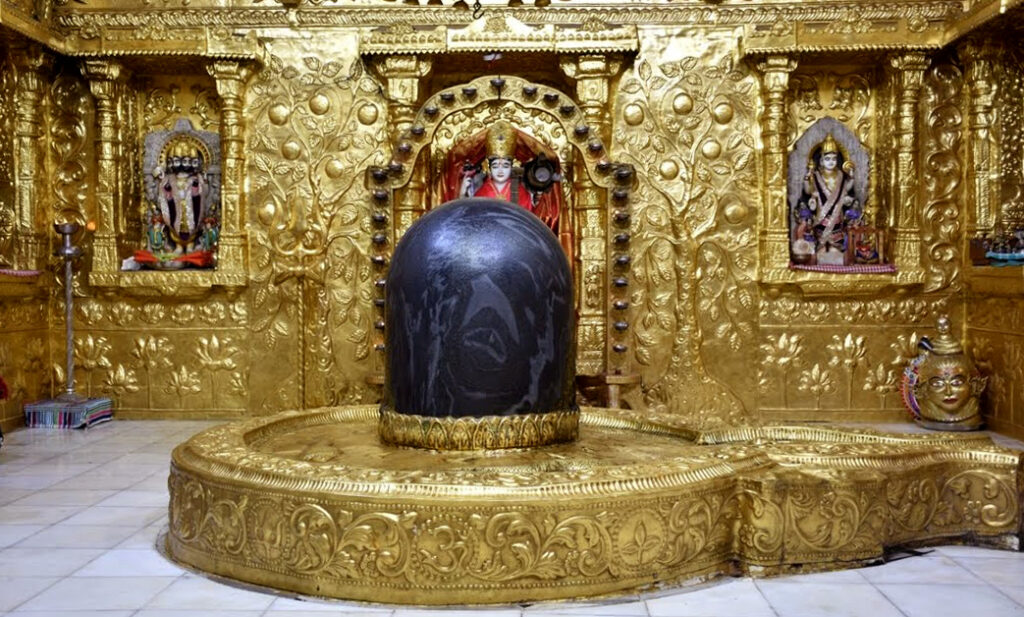
Festivals like Mahashivaratri, Kartik Purnima, and Shravan Month witness grand rituals and ceremonies at the Somnath Temple. Devotees immerse themselves in sacred rituals, offering prayers and performing abhishekam (ritualistic bathing) to seek Lord Shiva’s divine grace and blessings.
Nageshwar Jyotirlinga Temple: Dwarka, Gujarat
The Sacred Jyotirlinga of Lord Shiva – Dwelling of the Mighty Serpent
Introduction of Nageshwar Jyotirlinga Temple:
Situated near the city of Dwarka in Gujarat, the Nageshwar Jyotirlinga Temple holds immense significance as one of the 12 Jyotirlinga dedicated to Lord Shiva. Known as the “Dwarka Nageshwar Jyotirlinga,” this divine temple’s sanctorium enshrines the Nageshwar Linga, symbolizing the presence and divine power of Lord Shiva. Let us walk on a spiritual journey to explore the profound history, sacred legends, and the spiritual essence surrounding the Nageshwar Temple.
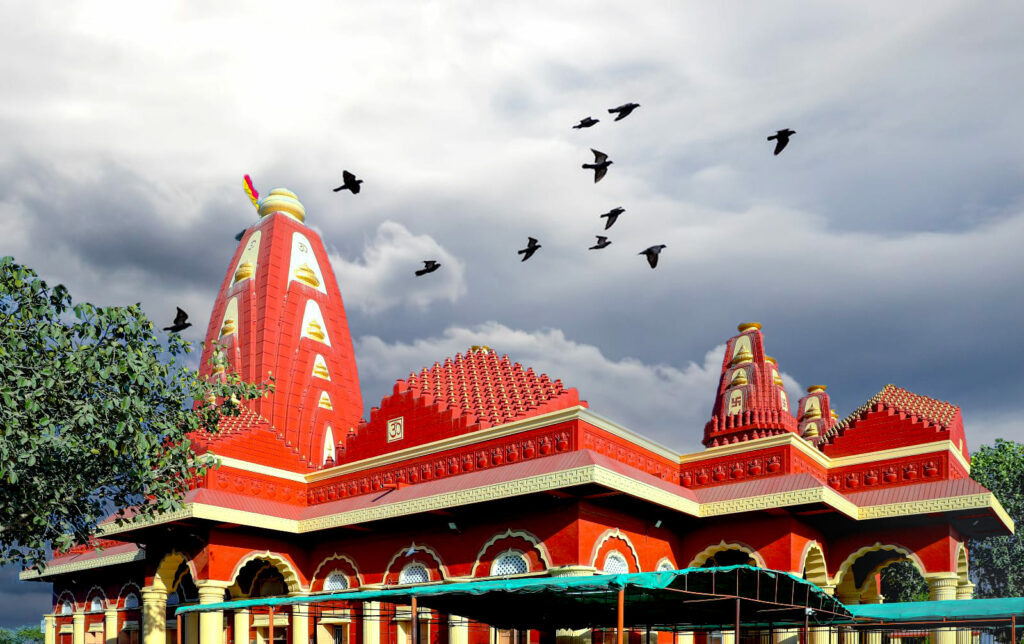
Nageshwar Jyotirlinga Temple: Dwarka, Gujarat. Photo Credits: Gujarat Tourism
Nomenclature and Mythological Significance behind Nageshwar Jyotirlinga Temple:
The term “Nageshwar” is derived from two Sanskrit words – “Naga” meaning “serpent” and “Ishwara” representing “Lord.” Nageshwar signifies the Lord of Serpents, as Lord Shiva is often associated with snakes in Hindu mythology. The temple derives its name from the sacred association with the serpent lord.
Legends and Historical Significance related to Nageshwar Jyotirlinga Temple:
According to ancient stories, it is believed that the Nageshwar Temple holds a strong connection with the legendary tale from in the Shiva Purana. The story revolves around the demon couple Daruka and Daruki, who were devotees of Lord Shiva. Impressed by their unwavering devotion, Lord Shiva granted them a boon to be invincible. However, the demon Daruka misused his powers and created havoc on Earth.
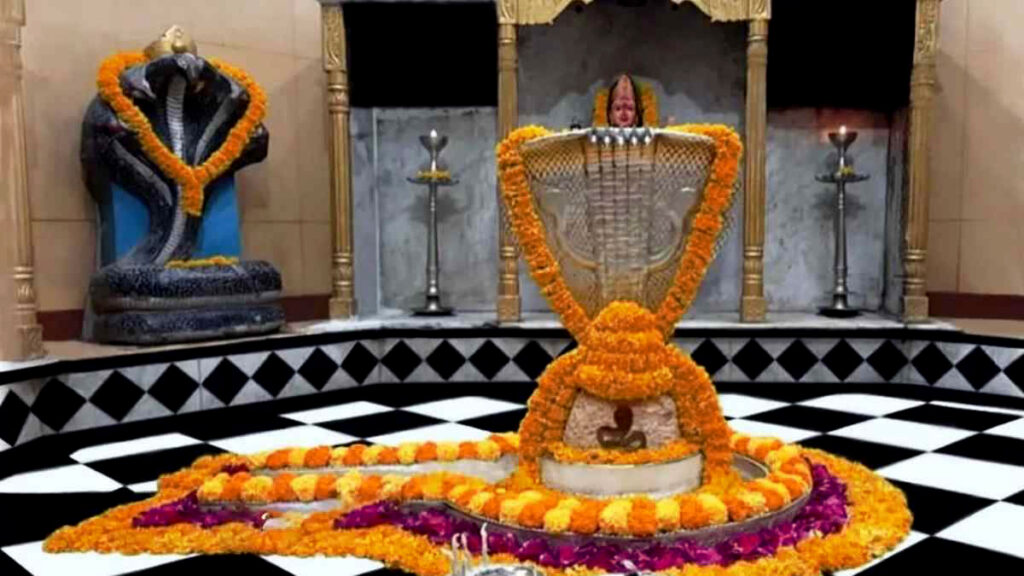
Photo Credits: Jagran.com
To restore balance and protect the world, Lord Shiva manifested as the Nageshwar Jyotirlinga, emerged as a towering column of light, and vanquished the demon Daruka. The temple’s location is believed to be the site where this divine intervention took place, cementing its historical and mythological significance.
Architectural Marvel and Sacred Rituals associated with Nageshwar Jyotirlinga Temple:
The Nageshwar Temple showcases exquicent architectural craftsmanship, blending intricate carvings and vibrant beautiful sculptures. In the sanctum sanctorum holds the Nageshwar Linga, a self-manifested linga, which is a naturally formed oval-shaped stone believed to embody Lord Shiva’s presence.
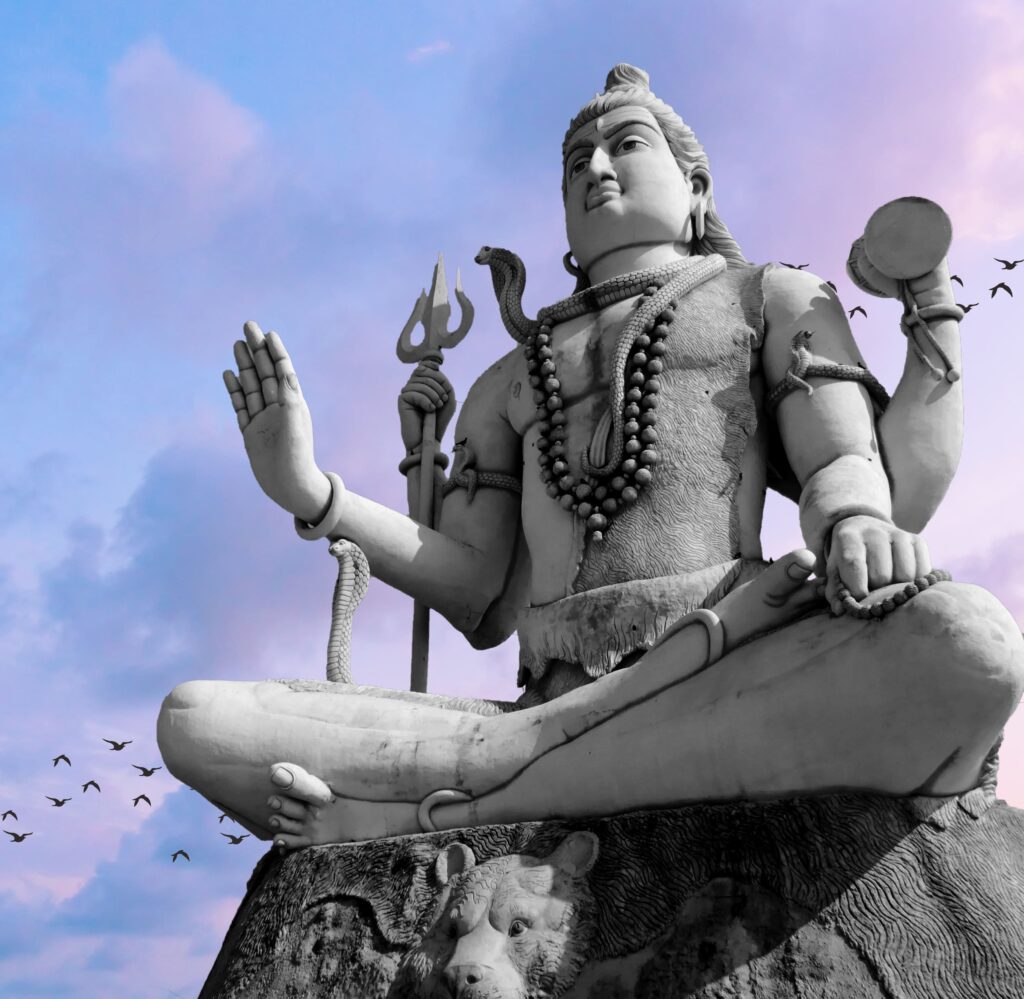
Devotees gather to the Nageshwar Temple to seek the blessings of Lord Shiva and participate in sacred rituals. The Maha Rudra Abhishekam, is performed with great devotion, where milk, water, and flowers are poured over the lingam. The chanting of name of lord shiva and the resonating sounds of bells and conches create an atmosphere charged with spiritual calmness.
Pilgrimage and Spiritual Significance of Nageshwar Jyotirlinga Temple:
Pilgrims from far and wide landscapes of India and the world takes the spiritual journey to the Nageshwar Temple, seeking solace, divine blessings, and spiritual awakening. The temple radiates a calming aura, inviting devotees to immerse themselves in deep contemplation and connect with the divine essence of Lord Shiva.
Devotees believe that worshiping at the Nageshwar Temple grants liberation from the cycle of birth and death, bringing inner transformation and spiritual enlightenment.
Bhimashankar Jyotirlinga Temple: Pune, Maharashtra
The Divine Jyotirlinga of Lord Shiva – Manifestation of Strength and Serenity
Introduction about Bhimashankar Jyotirlinga Temple:
Situated in the mid of the scenic Sahyadri Mountains of Maharashtra, the Bhimashankar Temple stands as one of the 12 Jyotirlinga dedicated to Lord Shiva. Known for its mesmerizing natural beauty and spiritual aura, this sacred abode holds deep significance for devotees seeking the divine blessings of Lord Shiva.
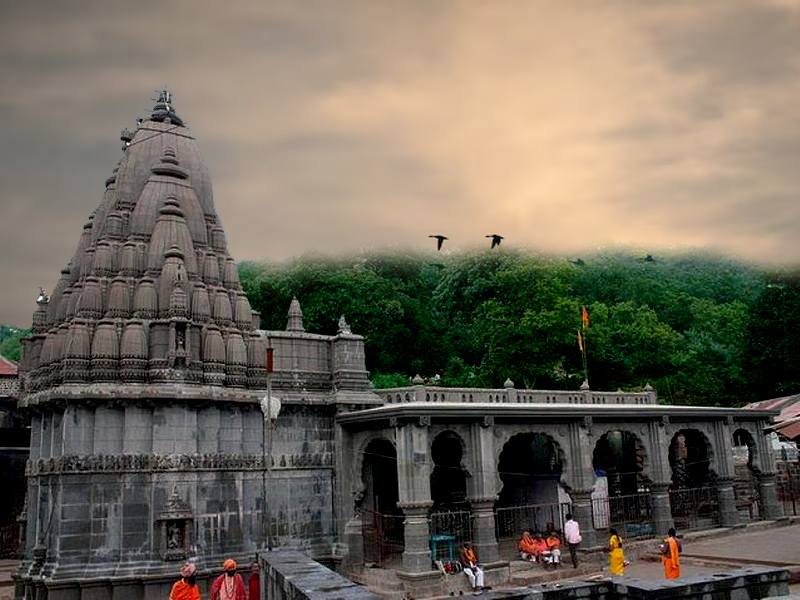
Mythological Legends and Significance of Bhimashankar Jyotirlinga Temple:
The Bhimashankar Temple derives its name from the ancient mythological tale associated with Lord Shiva’s incarnation as Bhima, known for his immense strength. According to legend, Lord Shiva appeared in the form of a fierce and majestic Jyotirlinga to vanquish the demon Tripurasura, who threatened peace and harmony in the universe. The temple’s location is believed to be the spot where Lord Shiva manifested his divine presence to protect and restore cosmic order.
Architectural Marvel and Sacred Surroundings of Bhimashankar Jyotirlinga Temple:
The Bhimashankar Temple stands as an architectural marvel, blending traditional Nagara-style and Hemadpanti architectural elements. The temple’s intricate carvings, ornate pillars, and exquisite sculptures create a mesmerizing visuals, transporting devotees into a realm of divinity and soulfullness.
Surrounded by lush greenery and cascading waterfalls, the temple is nestled in the Bhimashankar Wildlife Sanctuary, providing a serene backdrop for spiritual awakening. The natural splendor and serene atmosphere further enhance the spiritual experience for pilgrims and seekers.
The Sacred Rituals of Bhimashankar Jyotirlinga Temple:
The sanctum sanctorum of the Bhimashankar Temple houses the revered Bhimashankar Jyotirlinga, representing Lord Shiva’s supreme cosmic energy. The linga is adorned with intricate jewelry and offerings.
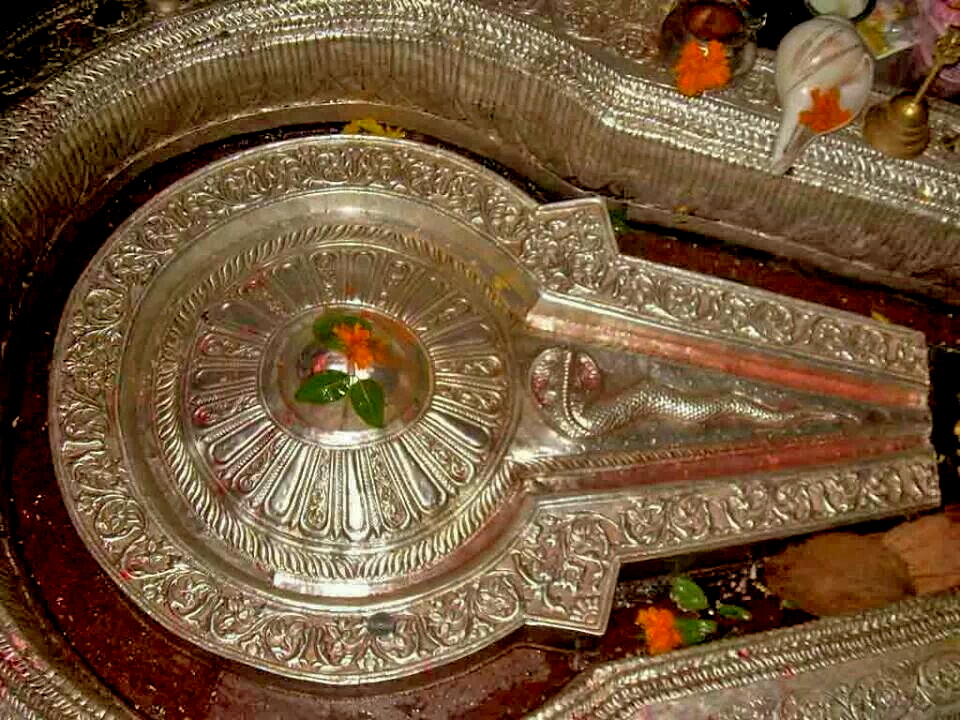
Bhimashankar Jyotirlinga: Pune, Maharashtra. Photo Credits: RVA Temples
Devotees engage in various rituals and prayers at the temple to seek the blessings and divine grace of Lord Shiva. The rhythmic chants of Vedic hymns, the fragrance of agarbatti and Dhoopam or Dhoop, and the resonating sounds of bells create an atmosphere charged with spiritual upliftment. The Abhishekam, the ceremonial bath of the linga with holy water, milk, and sacred substances, is performed with utmost devotion, symbolizing the purification of the devotee’s mind, body, and soul.
Pilgrimage and Spiritual Essence of Bhimashankar Jyotirlinga Temple:
The Bhimashankar Temple attracts devotees from far and wide, who embark on a sacred pilgrimage to seek spiritual solace and enlightenment. The serene surroundings and the divine energy permeating the temple inspire a deep sense of devotion and reverence.
The pilgrimage to Bhimashankar is not only a physical journey but also an inner transformation. The spiritual vibrations and the divine presence of Lord Shiva help seekers attain inner peace, dissolve worldly attachments, and experience the profound connection between the self and the supreme consciousness.
Trimbakeshwar Jyotirlinga Temple: Nashik, Maharashtra
The Sacred Abode of Lord Shiva – The Source of the Sacred Godavari River
Introduction of Trimbakeshwar Jyotirlinga Temple:
Located in the beautiful town of Trimbak in Maharashtra, the Trimbakeshwar Jyotirlinga Temple holds immense spiritual significance as one of the 12 revered Jyotirlingas dedicated to Lord Shiva. Known as the “Trimbakeshwar Jyotirlinga,” this divine sanctuary not only represents the presence of Lord Shiva but also serves as the originating point of the sacred Godavari River. Let us embark on a spiritual journey to explore the ancient legends, architectural splendor, and the profound spiritual essence surrounding the Trimbakeshwar Temple.
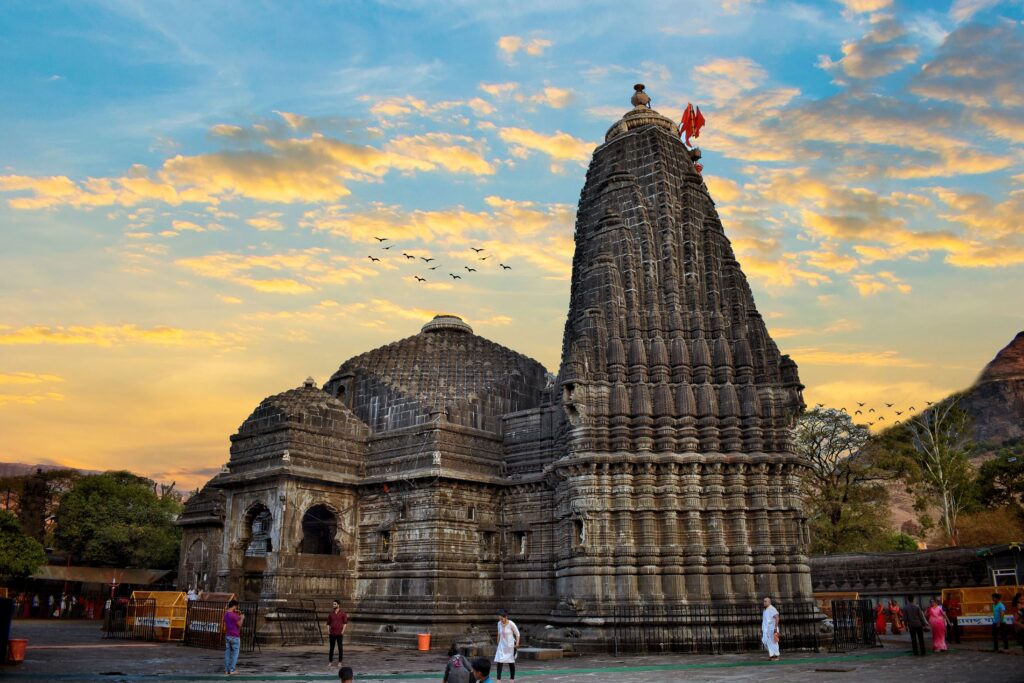
Trimbakeshwar Jyotirlinga Temple: Nashik, Maharashtra: Photo Credits Wikipedia
Mythological Legends and Sacred Origins of Trimbakeshwar Jyotirlinga Temple:
The Trimbakeshwar Jyotirlinga Temple is steeped in ancient mythology and legends. According to one popular belief, the sacred Godavari River is said to originate from a reservoir called the “Kushavarta Kund” located within the temple complex. It is believed that Lord Shiva himself released the Ganges River from his matted locks, which then flowed down to earth as the Godavari River, bestowing divine blessings upon the land.
The temple’s origin dates back to the ancient times, and its significance finds mention in sacred scriptures such as the Skanda Purana and the Shivapuran. Legends also narrate how Lord Shiva, in the form of Trimbakeshwar Jyotirlinga, granted salvation to countless devotees who sought spiritual liberation.
Architectural Marvel and Sacred Rituals related to Trimbakeshwar Jyotirlinga Temple:
The Trimbakeshwar Jyotirlinga Temple stands as an architectural masterpiece, reflecting the Indo-Aryan style of architecture. The temple’s elaborate entrance, intricately carved walls, and ornate spires create a captivating sight for devotees and visitors. The sanctum sanctorum houses the revered Trimbakeshwar Jyotirlinga, which is believed to possess immense spiritual power and radiate divine energy.
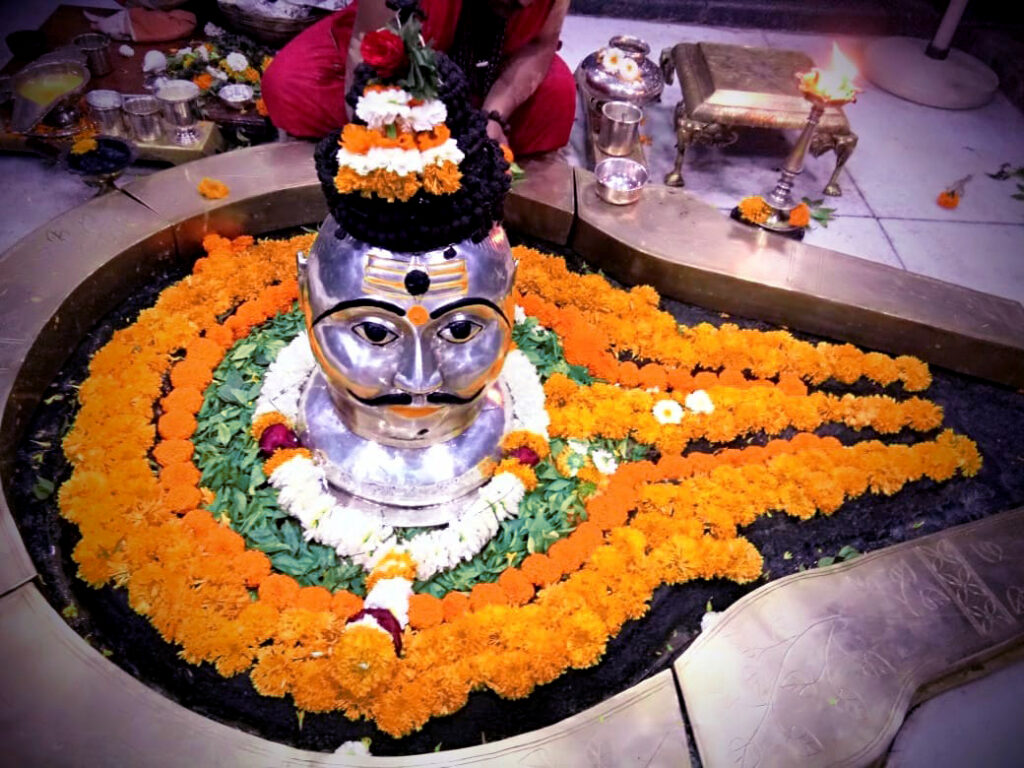
Photo Credits: Tripinvites.com
Devotees flock from all over the world to the Trimbakeshwar Temple to engage in various rituals and seek the blessings of Lord Shiva. The Rudra-bhishek, a ceremonial bath of the linga with sacred substances like milk, water, honey, and sandalwood paste, is performed with deep reverence and devotion. The temple resonates with the enchanting sounds of Vedic chants, hymns, and prayers, creating an atmosphere charged with spiritual fervor.
Pilgrimage and Spiritual Significance of Trimbakeshwar Jyotirlinga Temple:
The Trimbakeshwar Jyotirlinga Temple holds a special place in the hearts of pilgrims who undertake a sacred journey to seek spiritual solace and divine blessings. The temple’s serene surroundings, located between the lush greenery of the Brahmagiri Hills, provide a breath taking environment for introspection and contemplation.
Devotees believe that visiting the Trimbakeshwar Jyotirlinga Temple, taking a dip in the holy Kushavarta Kund, and offering prayers with utmost devotion can purify one’s soul and wash away sins. The pilgrimage to Trimbakeshwar is not only a physical endeavor but also a spiritual quest to experience the divine presence of Lord Shiva, leading to spiritual awakening and inner transformation.
Grishneshwar Jyotirlinga Temple: Aurangabad, Maharashtra
The Sacred Abode of Lord Shiva – Gateway to Divine Healing and Blessings
Introduction about Grishneshwar Jyotirlinga Temple:
Nestled in the serene town of Verul, Maharashtra, the Grishneshwar Jyotirlinga Temple stands as one of the 12 revered Jyotirlinga dedicated to Lord Shiva. Known as the “Grishneshwar Jyotirlinga,” this ancient and sacred temple holds immense spiritual significance for devotees seeking divine healing, blessings, and spiritual upliftment. Let us embark on a spiritual journey to uncover the mystical legends, architectural splendor, and the profound spiritual essence surrounding the Grishneshwar Temple.
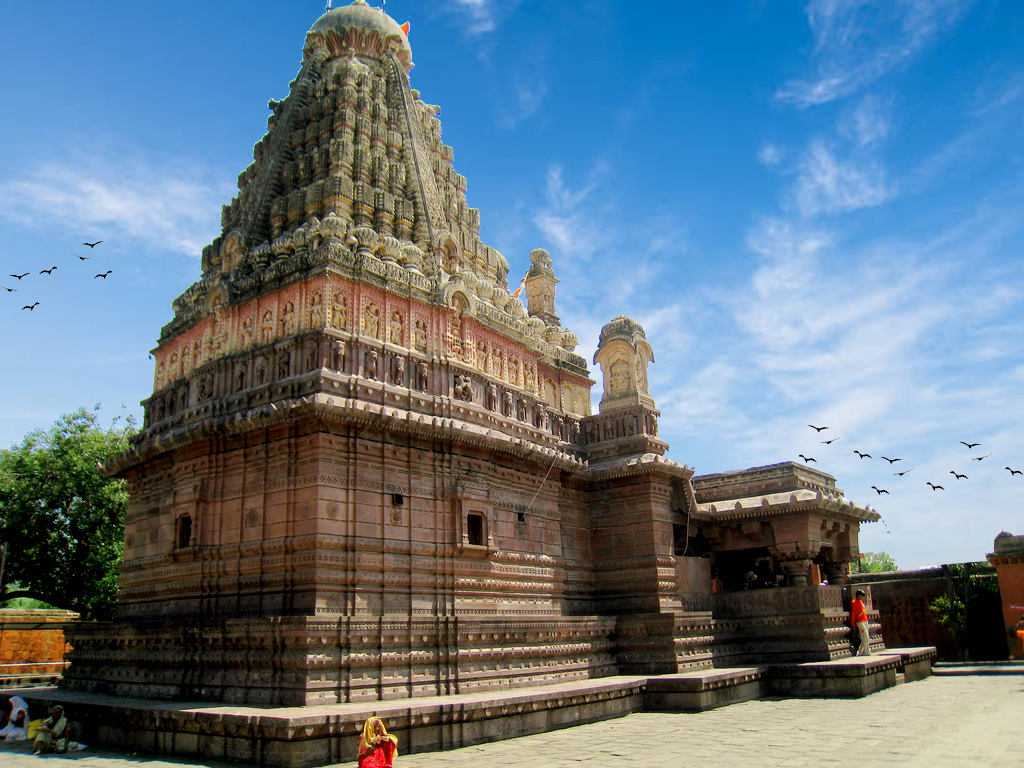
Image Source: myoksha.com
Mythological Legends and Divine Miracles related to Grishneshwar Jyotirlinga Temple:
The Grishneshwar Jyotirlinga Temple is intertwined with captivating mythological legends that depict Lord Shiva’s divine grace and miraculous interventions. One popular legend tells the tale of a devout woman named Kusuma, who was childless and yearned for a child. Impressed by her unwavering devotion, Lord Shiva blessed her with a son at the Grishneshwar Temple. This divine intervention earned the temple its name, as “Grishneshwar” translates to “Lord of Compassion.”
Legends also narrate how Lord Shiva bestowed divine healing and restored the health of devotees who sought solace and liberation at the temple. The sacred space of Grishneshwar Jyotirlinga Temple is believed to be a powerful conduit for experiencing divine grace and blessings.
Architectural Marvel and Sacred Atmosphere of Grishneshwar Jyotirlinga Temple:
The Grishneshwar Temple stands as a testimony to magnificent architectural work. The temple showcases beautiful delicate carvings, sculptured walls, and beautifully adorned spires that reflect the grandeur of ancient Indian temple architecture. The sanctum sanctorum houses the revered Grishneshwar Jyotirlinga, emmiting an aura of divinity and tranquility.
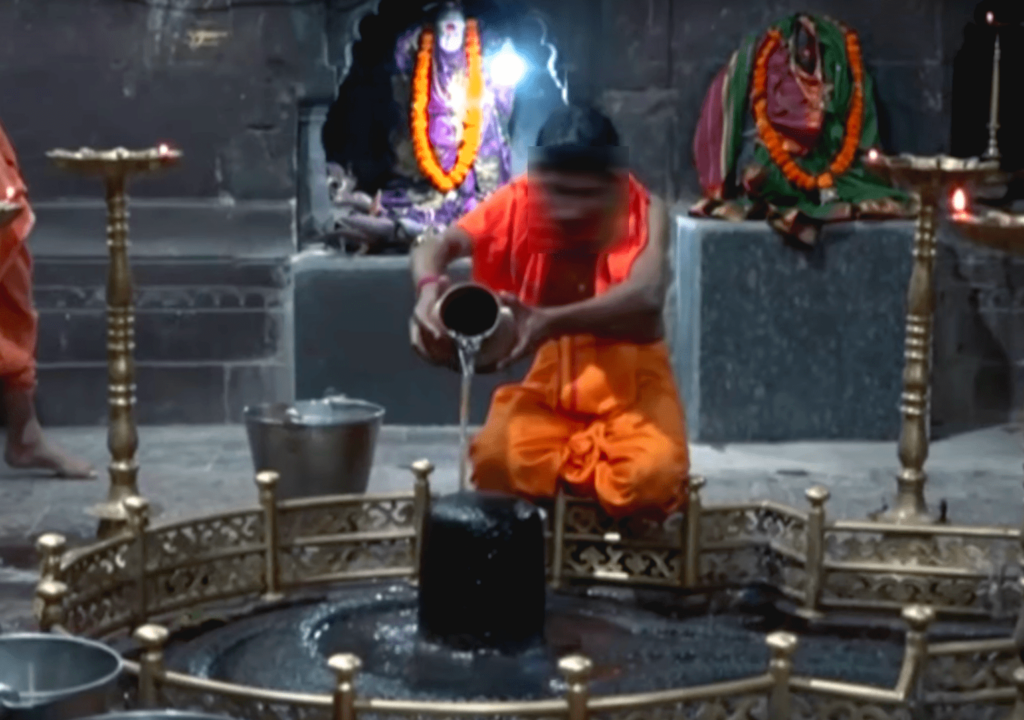
The temple’s serene atmosphere, adorned with fragrant flowers and resonating with Vedic chants, creates a sacred ambiance that invites devotees to surrender their minds and hearts to Lord Shiva. The divine energy permeating the temple’s surroundings instills a deep sense of devotion and reverence in the hearts of the seekers.
Pilgrimage and Spiritual Significance of Grishneshwar Jyotirlinga Temple:
Pilgrims from far and wide undertake a sacred journey to the Grishneshwar Jyotirlinga Temple, seeking divine blessings, spiritual solace, and liberation from worldly afflictions. Devotees believe that worshiping at this sacred abode can bestow prosperity, peace, and fulfillment in their lives.
The temple serves as a spiritual gateway for inner healing, where devotees can offer prayers, perform rituals, and seek divine guidance. The recitation of ancient Vedic mantras and hymns creates an atmosphere charged with spiritual vibrations, facilitating a profound connection between the individual soul and the supreme consciousness.
Baidyanath Jyotirlinga Temple: Deoghar, Jharkhand
The Divine Abode of Lord Shiva – The Epitome of Healing and Well-being
Introduction of Baidyanath Jyotirlinga Temple:
Nestled in the ancient city of Deoghar in Jharkhand, the Baidyanath Jyotirlinga Temple stands as one of the 12 Jyotirlingas dedicated to Lord Shiva. Known as the “Vaidyanath Jyotirlinga,” this sacred pilgrimage site holds deep spiritual significance as the abode of Lord Shiva, the divine healer and healer of health and well-being. Let us embark on a spiritual journey to unravel the captivating legends, architectural marvels, and the profound spiritual essence surrounding the Baidyanath Temple.
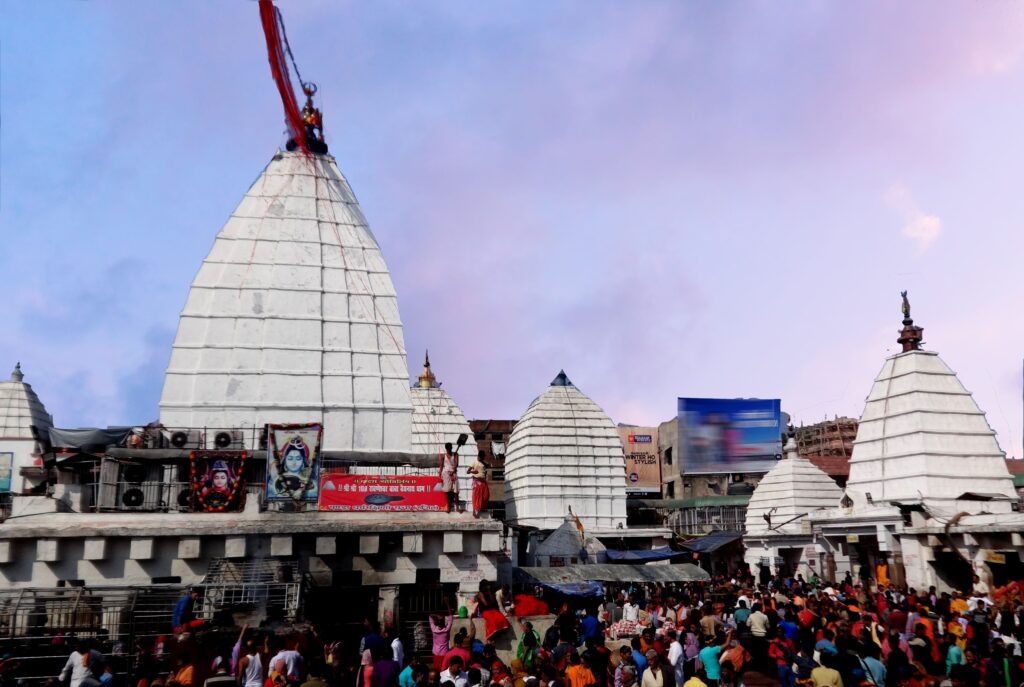
Photo Credits : exploremyways.com
Mythological Legends and Healing Grace of Baidyanath Jyotirlinga Temple:
The Baidyanath Jyotirlinga Temple is steeped in mythological legends that depict Lord Shiva’s role as the divine healer. According to ancient scriptures, Lord Shiva assumed the form of Baidyanath (the Divine Physician) to heal and protect the sufferings of humanity. It is believed that worshiping Lord Shiva in this form at the Baidyanath Jyotirlinga Temple can restore divine healing, cure ailments, and restore overall well-being.
Legends also narrate how Lord Ravana, the mythical demon king, undertook a rigorous penance to seek Lord Shiva’s blessings at this sacred site. Impressed by his devotion, Lord Shiva granted Ravana a divine linga, which later became the Baidyanath Jyotirlinga, symbolizing the eternal healing power of the divine.
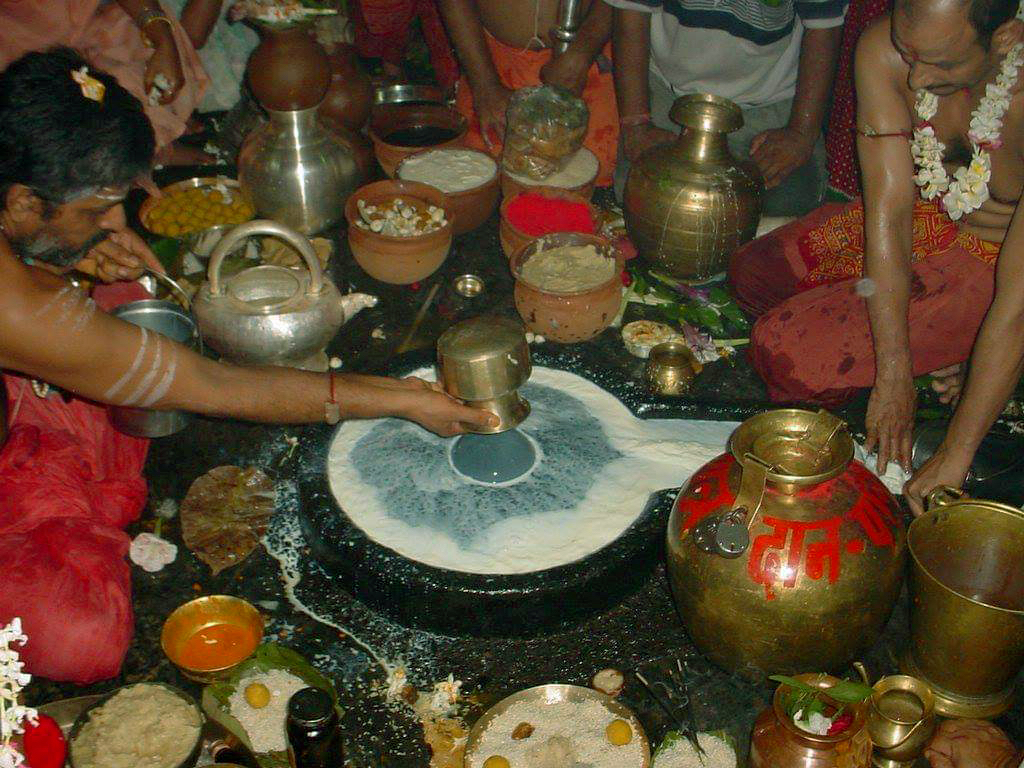
Phot Credits: Baidyanath Nagri
Architectural Splendor and Sacred Atmosphere of Baidyanath Jyotirlinga Temple:
The Baidyanath Jyotirlinga Temple showcases exquisite architectural work, blending traditional North Indian and Mughal architectural styles. The temple complex features intricately carved walls, majestic domes, and beautifully adorned spires, all symbolizing the grandeur of divine presence.
Upon entering the temple, devotees are greeted by a serene and sacred atmosphere, resonating with the echoes of devotional chants and prayers. The sanctum sanctorum houses the revered Baidyanath Jyotirlinga, radiating a divine aura that instills hope, faith, and healing energy in the hearts of devotees.
Rituals and Divine Offerings for Baidyanath Jyotirlinga Temple:
Devotees engage in various rituals and offerings at the baidyanath Jyotirlinga Temple to seek divine healing and well-being. The holy water from the Ganges River, also known as “jalabhishek,” is poured over the linga as a symbol of purification and the healing grace of Lord Shiva. Devotees also offer bilva leaves, flowers, and sacred chants to express their devotion and seek blessings for good health.
Pilgrimage and Spiritual Significance of Baidyanath Jyotirlinga Temple:
The pilgrimage to the Baidyanath Jyotirlinga Temple holds immense significance for devotees seeking healing, both physical and spiritual. It is believed that sincere prayers and offerings at this sacred abode can remove obstacles, and bring about complete well-being.
The spiritual journey to the Baidyanath Jyotirlinga Temple allows devotees to deepen their connection with Lord Shiva as the ultimate healer and experience profound inner transformation. The serene surroundings and the divine energy of the temple serve as a catalyst for spiritual growth, healing, and self-realization.
Mahakaleshwar Jyotirlinga Temple: Ujjain, Madhya pradesh
The Majestic Abode of Lord Shiva – The Eternal Protector and Destroyer of Time
Introduction of Mahakaleshwar Jyotirlinga:
Situated on the banks of the holy Kshipra River in Ujjain, Madhya Pradesh, the Mahakaleshwar Temple stands as one of the 12 Jyotirlingas dedicated to Lord Shiva. Known as the “Mahakaleshwar Jyotirlinga,” this ancient and sacred temple holds immense spiritual significance as the abode of Lord Shiva, the eternal protector and destroyer of time. Let us embark on a divine journey to explore the rich history, mystical legends, and the profound spiritual essence surrounding the Mahakaleshwar Temple.
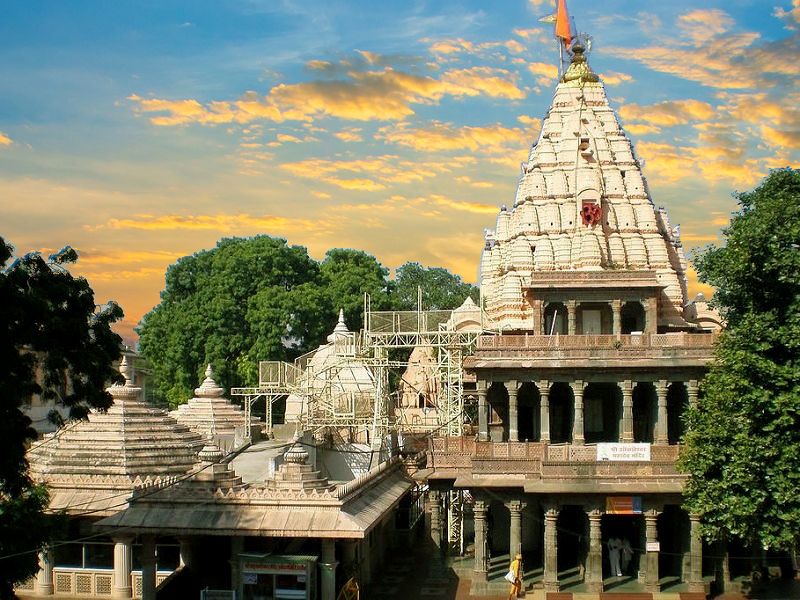
Image Credits: Trawell.in
Mythological Legends and Timeless Grace of Mahakaleshwar Jyotirlinga:
The Mahakaleshwar Temple is steeped in captivating mythological legends that depict the awe-inspiring power and grace of Lord Shiva. According to ancient scriptures, Lord Shiva manifested in the form of Mahakaleshwar to protect the universe from evil forces and restore cosmic balance. It is believed that worshipping Mahakaleshwar at this sacred abode can grant liberation from the cycle of birth and death, symbolizing the eternal nature of time and the transcendence of worldly attachments.
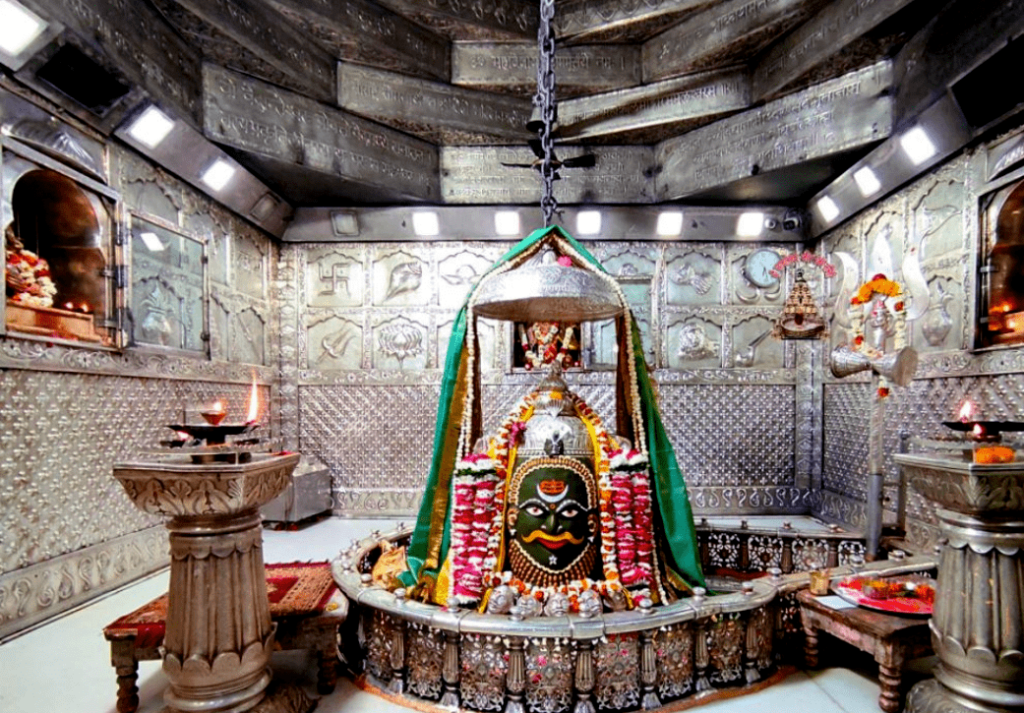
Photo Credits: Mysoultravelling.com
Legends also narrate how the Mahakaleshwar Jyotirlinga temple witnessed numerous divine interventions and miraculous occurrences, amplifying the god’s presence and compassionate blessings of Lord Shiva. Devotees believe that Mahakaleshwar’s grace can bestow divine protection, spiritual awakening, and liberation from worldly illusions.
The Battle between Lord Shiva and Lord Yama:
A legend associated with the Mahakaleshwar Jyotirlinga involves a fierce battle between Lord Shiva and Lord Yama, the god of death. It is believed that the ruler of Ujjain, Raja Chandrasena, once unknowingly disturbed a sage named Vriddhakar and his consort. In anger, the sage cursed the king with a deadly disease. In order to save the king, his wife, Queen Madhavi, performed intense penance to seek Lord Shiva’s intervention. Pleased with her devotion, Lord Shiva appeared and defeated Lord Yama, thus liberating the king from the curse. This event is believed to have occurred at the present site of the Mahakaleshwar temple.
The King Vikramaditya’s Association with Mahakaleshwar Jyotirlinga Temple:
King Vikramaditya, a legendary ruler, is said to have played a significant role in the history of the Mahakaleshwar Jyotirlinga. It is believed that he renovated and expanded the temple during his reign. He was a devout worshipper of Lord Shiva and made significant contributions to the temple’s development, making it one of the most prominent pilgrimage sites in India.
Architectural Splendor and Sacred Rituals associated with Mahakaleshwar Jyotirlinga:
The Mahakaleshwar Temple showcases beautiful architecture, with its towering spires, intricately carved walls, and majestic entrance gateways. The temple’s distinct Bhumija and Maru-Gurjara architectural styles reflect the rich cultural heritage of the region. The sanctum sanctorum houses the revered Mahakaleshwar Jyotirlinga, radiating a divine aura that mesmerizes devotees with its timeless presence.
Devotees flock to the temple to partake in sacred rituals and seek blessings from Mahakaleshwar. The Bhasma Aarti, a unique ritual where the deity is adorned with sacred ash, is performed daily in the early morning hours, creating a mystical atmosphere filled with devotion and reverence. The divine chants, hymns, and prayers reverberate through the temple, creating an environment charged with spiritual energy and devotion.
Pilgrimage and Spiritual Significance of Mahakaleshwar Jyotirlinga Temple:
The pilgrimage to the Mahakaleshwar Temple holds immense spiritual significance for devotees seeking divine grace, protection, and liberation. The temple serves as a gateway to profound spiritual experiences and inner transformation. It is believed that a visit to the temple and sincere devotion can help seekers transcend the limitations of time and attain spiritual enlightenment.
The sacred city of Ujjain, with its association with Lord Shiva and its historical and cultural heritage, further adds to the spiritual significance of the Mahakaleshwar Temple. Pilgrims from far and wide undertake the journey to seek Mahakaleshwar’s blessings, immerse themselves in the divine vibrations, and connect with the eternal essence of Lord Shiva.
Omkareshwar Jyotirlinga Temple: The Sacred Confluence of Devotion and Divinity – Uniting the Divine Energies of Lord Shiva and Goddess Parvati
Introduction of Omkareshwar Jyotirlinga Temple:
Nestled on the serene island of Mandhata in the Narmada River, Madhya Pradesh, the Omkareshwar Jyotirlinga Temple stands as a revered pilgrimage site dedicated to Lord Shiva. Known as the “Omkareshwar Jyotirlinga,” this ancient temple holds immense spiritual significance as the abode of Lord Shiva, the supreme consciousness, and represents the cosmic union of Lord Shiva and Goddess Parvati. Let us embark on a spiritual journey to discover the captivating legends, architectural marvels, and the profound spiritual essence surrounding the Omkareshwar Jyotirlinga Temple.
Legends and Divine Confluence of Omkareshwar Jyotirlinga Temple:
The Omkareshwar Temple is enshrined with captivating legends that depict the divine confluence of Lord Shiva and Goddess Parvati. According to ancient scriptures, it is believed that Lord Shiva assumed the form of Omkareshwar (the Lord of Omkara) to appease the gods and goddesses and seek their blessings. The temple represents the eternal bond between Lord Shiva and Goddess Parvati, symbolizing the harmonious blending of masculine and feminine energies, creation, and dissolution.
The sacred island of Omkareshwar is said to resemble the shape of the sacred syllable “Om,” representing the cosmic vibration and the primordial sound of the universe. It is believed that chanting the sacred sound of “Om” in the vicinity of the temple enhances spiritual vibrations and leads to self-realization.
The Legend of Vindhya Mountains:
According to Hindu mythology, there was once a rivalry between the Vindhya Mountains and the Mount Meru, both of whom were seeking supremacy. In their quest for dominance, the Vindhya Mountains performed severe penance to please Lord Shiva. Pleased with their devotion, Lord Shiva appeared before them and granted their wish to be known as Omkareshwar, the divine form of Lord Shiva himself. The temple derives its name from this legend.
The Tale of King Mandhata:
The island on which the Omkareshwar Jyotirlinga Temple is situated is believed to be named after King Mandhata, an ancient ruler mentioned in Hindu scriptures. It is said that King Mandhata undertook a rigorous penance and worshiped Lord Shiva on this island, seeking his blessings and guidance. Lord Shiva was pleased with his devotion and granted him a boon, making the island sacred and declaring it as his abode.
The Divine Confluence of the Narmada and Kaveri Rivers:
One of the unique features of the Omkareshwar Jyotirlinga Temple is its location at the confluence of the Narmada and Kaveri rivers. This confluence, known as the “Mamaleshwar Sangam,” is considered highly auspicious and is believed to possess immense spiritual energy. It is believed that taking a holy dip at this sacred confluence can cleanse sins and bestow blessings upon devotees.
The Miraculous Appearance of the Lingam:
Another legend associated with the temple tells the story of a devotee named Mandhata. He was an ardent follower of Lord Shiva but was childless. In his prayers, he pleaded for a child. Pleased with his devotion, Lord Shiva appeared before him and granted his wish. Lord Shiva transformed himself into a Jyotirlinga and blessed Mandhata. This divine lingam is believed to be enshrined in the Omkareshwar Jyotirlinga Temple.
Architectural Splendor and Sacred Significance of Omkareshwar Jyotirlinga Temple:
The Omkareshwar Jyotirlinga Temple showcases exquisite architectural splendor, combining the Nagara and Dravidian architectural styles. The temple complex features intricately carved walls, magnificent spires, and ornate gateways, reflecting the grandeur of Indian temple architecture. The sanctum sanctorum houses the revered Omkareshwar Jyotirlinga, radiating an aura of divine energy and profound spirituality.
The sacred Narmada River flows around the island, forming two distinct hills, symbolizing the sacred presence of Lord Shiva and Goddess Parvati. Devotees undertake a parikrama (circumambulation) of the island, offering prayers and seeking blessings from the divine couple. The spiritual ambiance of the temple, coupled with the soothing sounds of the flowing river, creates a serene and sacred atmosphere for devotees to connect with the divine energies.
Pilgrimage and Spiritual Significance of Omkareshwar Jyotirlinga Temple:
The pilgrimage to the Omkareshwar Temple holds immense spiritual significance for devotees seeking divine blessings, spiritual awakening, and liberation. It is believed that sincere devotion and offerings at this sacred abode can bestow inner peace, harmony, and divine grace.
The island of Omkareshwar is considered one of the holiest sites in Hinduism, attracting pilgrims from far and wide. Devotees undertake rigorous penance, perform sacred rituals, and participate in religious festivals to deepen their connection with Lord Shiva and Goddess Parvati. The annual festival of Mahashivratri is celebrated with great fervor, where devotees engage in night-long prayers and immerse themselves in devotion and spiritual practices.
Kashi Vishwanath Temple: The Sacred Abode of Lord Shiva in the Spiritual Capital of India
Introduction of Kashi Vishwanath Jyotirlinga Temple:
On the banks of the sacred river Ganges in Varanasi, Uttar Pradesh, Kashi Vishwanath Temple stands as one of the 12 Jyotirlingas dedicated to Lord Shiva. Recognized as the “Kashi Vishwanath Jyotirlinga,” this venerable temple carries immense spiritual weight as the dwelling of Lord Shiva, the supreme luminary and cosmic pillar of light. Let us embark on a spiritual sojourn to unravel the deep-seated history, intriguing myths, and the overwhelming spiritual ambiance that envelops the Kashi Vishwanath Temple.
Mythological Legends and the Spiritual Legacy of Kashi Vishwanath Jyotirlinga Temple:
Kashi Vishwanath Temple is immersed in profound mythological tales that express the extraordinary power and grace of Lord Shiva. Ancient scriptures narrate that Lord Shiva manifested as Kashi Vishwanath to illuminate the universe with divine wisdom and light. Devotees believe that worshipping Kashi Vishwanath at this hallowed site can grant liberation from the cycle of life and death, signifying the transcendence of earthly attachments and realization of ultimate truth.
Kashi Vishwanath Temple has witnessed numerous divine manifestations and miraculous happenings, strengthening the devotees’ faith and reinforcing the ceaseless blessings of Lord Shiva. It’s believed that Vishwanath’s benevolence can confer divine protection, spiritual enlightenment, and liberation from materialistic illusions.
The Legend of Lord Shiva and the City of Light:
One prominent legend associated with the Kashi Vishwanath Jyotirlinga involves Lord Shiva and the mystical city of light, Varanasi. It is said that Varanasi is the divine city of Lord Shiva and the center of spiritual wisdom. Shiva resided here and his potent light emanated, piercing through ignorance and darkness. The divine lighthouse, known as Vishwanath, is believed to have manifested in the place where the Kashi Vishwanath temple stands today.
Association of King Harishchandra with Kashi Vishwanath Jyotirlinga Temple:
King Harishchandra, a legendary ruler known for his honesty and integrity, is said to have been closely associated with the Kashi Vishwanath Jyotirlinga. His story is a testament to the divine powers of the temple. Harishchandra was blessed by Lord Shiva after enduring many trials and tribulations, reinforcing the spiritual importance of Kashi Vishwanath temple as a place that grants divine blessings and transformation.
Architectural Grandeur and Sacred Rituals of Kashi Vishwanath Jyotirlinga Temple:
Kashi Vishwanath Temple exhibits architectural grandeur with its towering spires, exquisitely sculpted walls, and magnificent entrance gateways. The temple’s sanctum sanctorum houses the revered Kashi Vishwanath Jyotirlinga, which exudes a divine aura that spellbinds devotees with its ever-present radiance.
Devotees visit the temple in droves to participate in sacred rituals and seek blessings from Kashi Vishwanath. The Ganga Aarti, a spiritual ritual that pays homage to the holy Ganges river, takes place every day, creating an ethereal ambiance filled with devotion and reverence. The divine chants, hymns, and prayers echo through the temple, enhancing its spiritual vitality and devotion.
Pilgrimage and Spiritual Significance of Kashi Vishwanath Jyotirlinga Temple:
The pilgrimage to Kashi Vishwanath Temple holds immense spiritual importance for devotees seeking divine grace, protection, and liberation. The temple serves as a doorway to profound spiritual experiences and inner transformation. It is believed that a visit to the temple and earnest devotion can help individuals transcend worldly limitations and attain spiritual enlightenment.
Varanasi, with its historical and cultural heritage associated with Lord Shiva, further adds to the spiritual significance of the Kashi Vishwanath Temple. Pilgrims from various corners of the world undertake the journey to seek Vishwanath’s blessings, immerse themselves in divine vibrations, and connect with the eternal essence of Lord Shiva.
Kedarnath Jyotirlinga Temple: A Sacred Himalayan Abode of Lord Shiva’s Divine Presence
Introduction of Kedarnath Temple:
Nestled in the lofty Himalayan peaks in Rudraprayag, Uttarakhand, the Kedarnath Temple stands as one of the most sacred pilgrimage destinations for Hindus. Known as one of the 12 Jyotirlinga, Kedarnath Temple holds immense spiritual significance as the divine abode of Lord Shiva, often depicted as the transformative force of the universe. As we begin our spiritual journey, let’s delve into the rich history, enthralling legends, and the profound spiritual essence encompassing the Kedarnath Temple.
Enthralling Legends and Divine Aura of Kedarnath jyotirlingaTemple:
Steeped in awe-inspiring legends and ancient mythology, Kedarnath Jyotirlinga Temple symbolizes the omnipotent and merciful nature of Lord Shiva. As per the legends, the Pandavas, after the great Mahabharata war, sought Lord Shiva’s blessings for redemption from the sins committed during the war. Lord Shiva, disguised as a bull, took refuge in Kedarnath to evade the Pandavas. However, when Bhima, one of the Pandavas, tried to hold the bull by its tail and hind legs, it sank into the ground, leaving behind the hump on the surface. This conical projection is worshipped as the idol in the Kedarnath temple.
Another fascinating tale associated with Kedarnath Temple involves the construction of the temple. It is believed that the temple was initially built by the Pandavas, and later, Adi Shankaracharya, the great 8th-century philosopher and reformist, refurbished the current temple.
Adi Shankaracharya’s Samadhi near Kedarnath Jyotirlinga Temple:
Near the Kedarnath temple, one can find the Samadhi or the final resting place of Adi Shankaracharya. It is believed that Shankaracharya took Samadhi at the young age of 32 after establishing the four ‘mathas’ in the four corners of India. The Samadhi site pays tribute to his remarkable contribution to Hindu philosophy and spirituality.
Architectural Grandeur and Sacred Rituals of Kedarnath Jyotirlinga Temple:
Constructed in a traditional Himalayan architectural style, the Kedarnath Temple showcases intricate carvings and stone-work. The structure is made of large, heavy, and evenly cut grey slabs of stones, bearing the harsh weather conditions of the region.
The sanctum sanctorum houses the revered Shiva Linga, which is worshipped as the hump of Lord Shiva in his bull form. The temple’s spiritual ambiance and serene surroundings, coupled with the enchanting chants and hymns, create an environment filled with spiritual energy and divine blessings.
Pilgrimage and Spiritual Significance of Kedarnath Jyotirlinga Temple:
The pilgrimage to Kedarnath Temple is considered an arduous journey, as it involves trekking through challenging terrains, enduring harsh weather conditions, and overcoming physical and mental barriers. Yet, this journey is believed to be a spiritually transforming experience, signifying the human soul’s journey toward divine enlightenment.
Kedarnath is also part of the Chota Char Dham Yatra in Uttarakhand, which includes Yamunotri, Gangotri, and Badrinath. Undertaking this pilgrimage is considered a path to attain salvation or Moksha in Hinduism.
With its breathtakingly beautiful surroundings, the temple not only offers a spiritual retreat but also a chance to connect with nature. The mesmerizing views of the snow-clad Himalayas, the cascading river Mandakini, and the lush green forests, all add to the divine and serene experience that Kedarnath Temple offers.
Whether it’s the devout pilgrim seeking divine blessings or the passionate traveler intrigued by India’s rich cultural heritage and history, Kedarnath Temple stands as a symbol of spiritual enlightenment, resilience, and eternal devotion to the divine.
Rameshwaram Jyotirlinga Temple: A Sacred Pilgrimage to the Southern Abode of Lord Shiva
Introduction to Rameshwaram Jyotirlinga Temple:
Situated on the peaceful island of Rameshwaram, off the southeastern coast of Tamil Nadu, the Rameshwaram Temple, also known as Ramanathaswamy Temple, is a celebrated pilgrimage destination revered by Hindus worldwide. The temple venerates Lord Shiva and forms part of the sacred Char Dham pilgrimage, showcasing the diverse spiritual culture and architectural brilliance of India. Let’s embark on this spiritual sojourn, exploring the captivating history, fascinating legends, and the profound spiritual charm of Rameshwaram Temple.
Enchanting Legends and Holy Significance of Rameshwaram Temple:
Rameshwaram Temple is enshrined with engrossing myths and legends from the epic Ramayana. According to mythology, it’s the place where Lord Rama, along with his wife Sita and brother Lakshmana, constructed a bridge across the sea to Lanka to rescue Sita from the demon king Ravana.
Before launching the final battle against Ravana, Lord Rama wished to seek blessings from Lord Shiva. To this end, he asked Lord Hanuman to bring a Shiva Lingam from the Himalayas. However, when Hanuman was delayed, Sita made a Lingam out of the sand. This Lingam, called Ramalingam, is the main deity worshipped in the temple.
Lord Rama sanctified this place by worshipping Lord Shiva here, which has since been a sacred spot of worship, and hence, the name Rameshwaram (meaning “Lord of Rama” in Sanskrit).
Architectural Brilliance and Sacred Rituals of Rameshwaram Temple:
The Rameshwaram Temple exhibits the magnificent Dravidian style of architecture with intricately carved granite pillars, towering gopurams (temple towers), and expansive corridors. Notably, the temple boasts the world’s longest corridor among all Hindu temples. The corridor is adorned with around 1212 pillars, each elegantly designed and finely sculpted.
Ritualistic practices at the temple include a ceremonial bath in the 22 holy wells or ‘theerthams’ within the temple precincts, each believed to have medicinal properties. The act of bathing in these theerthams is considered to purify the devotee from sins and afflictions.
Pilgrimage and Spiritual Significance of Rameshwaram Temple:
Rameshwaram Temple holds a vital place in Hinduism, being a part of the Char Dham pilgrimage, alongside Badrinath, Puri, and Dwarka. It is also associated with the Pancha Bhoota Stalam and Jyotirlinga, two important pilgrimage circuits of the Shaivites.
Moreover, Rameshwaram plays a pivotal role in the Sethu Yathra, a religious journey associated with performing last rites and rituals. It is believed that performing these rituals here brings peace to the souls of the ancestors.
Rameshwaram, with its serene beaches, vast ocean expanse, and the omnipresent spiritual tranquility, provides a unique blend of divine and natural beauty. The holistic environment, coupled with the echoing chants and hymns, fills the atmosphere with peace, mysticism, and spiritual fervor.
Rameshwaram Temple stands as a beacon of faith, spirituality, and devotion. Its sacred ambience and architectural splendour continue to enchant pilgrims and travelers alike, casting an everlasting impression on those who venture to this divine island city.
Mallikarjuna Temple: The Sacred Abode of Lord Shiva and Devi Parvati
Introduction to Mallikarjuna Jyotirlinga:
Situated in the picturesque town of Srisailam on the lush Nallamala Hills in Andhra Pradesh, the Mallikarjuna Jyotirlinga, also known as Srisailam Temple, is a cherished pilgrimage destination, venerated by devotees across the globe. This ancient temple is dedicated to Lord Shiva and forms a crucial part of the 12 Jyotirlinga pilgrimage in India. Let us journey into the entrancing world of Mallikarjuna Jyotirlinga and delve into its riveting history, enthralling legends, and profound spiritual aura.
Captivating Legends and Divine Significance of Mallikarjuna Jyotirlinga:
The enchanting lore of Mallikarjuna Jyotirlinga originates from ancient Hindu scriptures. According to legend, Lord Ganesha was married before his brother Kartikeya, which upset the latter. Kartikeya left for the Kraunch Mountain in a huff. To pacify him, Lord Shiva and Goddess Parvati assumed the forms of Mallikarjuna and Bhramaramba respectively and resided on the Srisailam Mountain.
The Mallikarjuna Jyotirlinga is thus the form of Lord Shiva that resides eternally on the Srisailam Mountain. The temple also houses the Bhramaramba Devi, one of the eighteen Maha Shakti Peethas, making it a unique temple where both a Jyotirlinga and a Shakti Peetha can be worshipped together.
Architectural Grandeur and Sacred Rituals at Mallikarjuna Jyotirlinga:
The temple is an epitome of the Vijayanagara architectural style, boasting intricately carved stone pillars, resplendent gopurams (temple towers), and an expansive courtyard. The main sanctum sanctorum houses the Jyotirlinga, worshipped as Mallikarjuna, and the shrine of Goddess Bhramaramba.
Devotees engage in various religious practices like Abhishekam, Archana, and Aarti, with profound devotion and reverence. Special rituals are conducted during festivals like Maha Shivaratri, Navaratri, and Karthika Pournami, attracting a multitude of pilgrims.
Pilgrimage and Spiritual Significance of Mallikarjuna Jyotirlinga:
Mallikarjuna Jyotirlinga is not only part of the revered Jyotirlinga pilgrimage but also an essential stop in the Shakti Peetha, Pancharama Kshetras, and Astadasa Shakti Peethas circuits.
The serene natural surroundings, the calming chants reverberating in the air, and the spiritual energy that permeates the atmosphere makes Mallikarjuna Jyotirlinga a spiritual haven. The divine vibes of the temple bestow peace upon the minds of the devotees, inspiring a sense of spiritual liberation and inner tranquility.
Mallikarjuna Jyotirlinga stands as a profound testament to India’s rich spiritual heritage, its enigmatic myths, and architectural brilliance. The temple continues to lure pilgrims and tourists with its mesmerizing blend of divinity, serene ambience, and ethereal beauty, imparting an ineffable sense of peace and spirituality.
In Conclusion:
The 12 Jyotirlingas of India stand as profound pillars of the country’s profound spiritual history, reflecting the indelible footprints of divine energy of lord shiva, spread across its sacred landscape. Each Jyotirlinga, uniquely stands strong in different parts of India, ranging from the bustling cities to the tranquil mountains, narrates tales of divine interventions, ancient traditions, and enchanting legends. They echo the celestial tunes of spirituality, speaking volumes about India’s rich mythology, deep-rooted faith, and grand architectural splendor.
From the snow-clad peaks sheltering Kedarnath to the coastal tranquility of Rameshwaram, the deep forests of Srisailam hosting Mallikarjuna to the vibrant city of Varanasi reverberating with the energy of Vishwanath, each of these 12 Jyotirlingas offers a distinct spiritual experience. Each temple serves as a beacon of peace and spiritual awakening, attracting seekers from all walks of life. They offer solace, inspiration, and a profound sense of connection with the divine.
The spiritual journey across these 12 Jyotirlingas is not just a pilgrimage, but an expedition that instills serenity, invigorates the soul, and elevates one’s consciousness. It is a pilgrimage that offers a deeper understanding of India’s spiritual heritage, allows one to delve into the essence of devotion, and leaves one with an indelible imprint of divinity on their hearts.
The spiritual saga of the 12 Jyotirlingas thus unfolds, guiding seekers through the path of divine enlightenment and the eternal cosmic dance of creation, preservation, and dissolution. The aura of these sanctums continues to illuminate the spiritual paths of countless devotees, kindling in their hearts the eternal flame of faith, devotion, and spiritual bliss.

